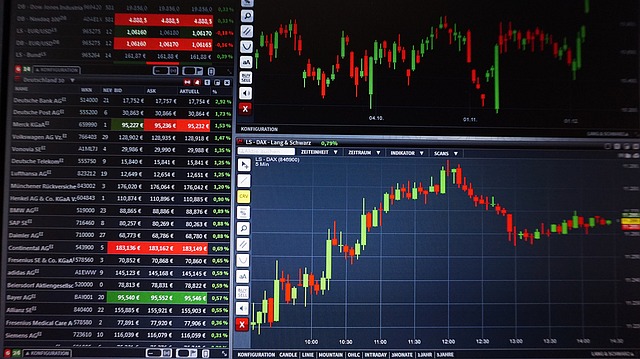The Rise of AI Trading Bots: A Comprehensive Exploration
In recent years, artificial intelligence (AI) has made a significant impact across various sectors, particularly in finance and trading. Among the most notable innovations in this arena is the development of AI trading bots. These sophisticated algorithms and programs are designed to execute trades on behalf of investors, analyzing vast amounts of data and making decisions at lightning speed. In this article, we will delve deep into the world of AI trading bots, exploring their functionalities, advantages, limitations, and future prospects, while interspersing personal insights and opinions to paint a holistic picture.

Understanding AI Trading Bots
Before we explore the intricacies of AI trading bots, it is essential to understand what they are and how they operate. At their core, AI trading bots are automated systems that use advanced algorithms, machine learning, and, in some cases, deep learning to analyze market data and execute trades. They can process information from various sources, including news articles, financial reports, and social media sentiment, to make informed decisions.
How Do AI Trading Bots Work?
AI trading bots operate through several intricate steps
- Data Collection
- Data Analysis
- Strategy Development
- Execution
1. Data Collection
The first step is gathering data. AI trading bots can collect vast amounts of historical and real-time data from various sources. This includes price movements, trading volumes, economic indicators, and fundamental data about different assets. Personally, I believe that the more diversified the data sources, the more robust the model becomes, as different data points can provide unique insights.
2. Data Analysis
Once the data is collected, the bot performs complex analyses using built-in algorithms. These analyses help identify trends and patterns that human traders may overlook due to the sheer volume of available data. In my opinion, machines can analyze data with unparalleled precision, but they lack the ability to interpret nuanced sentiment—something that human traders excel at.
3. Strategy Development
With insights gained from data analysis, AI trading bots develop trading strategies. These can range from high-frequency trading strategies that aim to exploit tiny price movements to long-term investment strategies. It is crucial to note that while AI can create and adjust strategies based on continuous data input, it lacks the emotional intelligence that often guides human decision-making. For instance, human traders often factor in their beliefs, risk tolerance, and market sentiment when making decisions.
4. Execution
The final step is executing trades. AI trading bots can place buy and sell orders across multiple platforms simultaneously and at speeds that no human could achieve. This efficiency can be a game-changer in the fast-paced world of trading.
Advantages of AI Trading Bots
The growth of AI trading bots in financial markets has stemmed from a variety of advantages they offer. Here are some of the key benefits:
- Efficiency and Speed: AI trading bots can analyze data and execute trades faster than any human, ensuring that opportunities aren't missed.
- Emotion-Free Trading: Unlike human traders, AI bots are not influenced by emotions such as fear or greed, which can lead to impulsive trading decisions.
- 24/7 Availability: Bots can operate around the clock, providing opportunities for trading even when humans are asleep.
- Consistency: AI bots stick to their programmed strategies, ensuring consistency in trading approaches, which can be beneficial for long-term investment plans.
From my perspective, while these advantages are compelling, it is crucial to understand that they do not guarantee profits. Markets are inherently unpredictable, and even the most advanced algorithms can lead to significant losses.
Limitations of AI Trading Bots
Despite their numerous benefits, AI trading bots are not without limitations. Here are some of the key challenges they face:
- Market Volatility: Rapid changes in market conditions can render trading strategies ineffective, leaving bots vulnerable to losses.
- Overfitting: AI models that are overly complex may work exceedingly well with historical data but perform poorly in real-time trading.
- Limited Understanding of Context: AI lacks the ability to understand broader market contexts—like geopolitical events or economic crises—because its analysis is grounded in historical data.
In my view, the overreliance on AI trading bots can potentially lead to a disconnect with the market's underlying dynamics. Human intuition and contextual understanding should not be discounted in trading strategies.

The Future of AI Trading Bots
Looking ahead, the future of AI trading bots seems promising, albeit with a few caveats. As technology advances, we can expect to see the following trends:
- Increased Integration of Machine Learning: Future AI trading bots will likely use advanced machine learning algorithms to continuously improve their strategies based on real-time data.
- Greater Personalization: We may see a surge in personalized trading bots that adapt to individual risk profiles, investment goals, and market preferences.
- Collaborative Trading: AI trading bots could be designed to work alongside human traders, providing them with insights while leaving the final decisions to humans.
- Regulatory Developments: As AI trading continues to grow, regulatory frameworks will likely evolve, requiring transparency in algorithm-driven trading.
In my opinion, merging the power of AI with human expertise will present the most effective approach to trading in the future. The synergy of human oversight and sophisticated algorithms could unlock new potential that neither could achieve alone.
Conclusion
AI trading bots represent a remarkable advancement in the financial world. They offer many benefits such as speed, efficiency, and emotion-free trading, making them an appealing choice for both novice and professional traders. However, their limitations, including susceptibility to market volatility and lack of contextual understanding, should not be overlooked. As technology continues to evolve, the future of AI trading bots promises exciting developments, paving the way for a new era of trading. Ultimately, the ideal trading strategy may lie in a balanced approach, combining the robust capabilities of AI with the insightful and intuitive nature of human traders.
As an avid observer of both technology and finance, I firmly believe that embracing the strengths of both AI trading bots and human traders could revolutionize the investment landscape. As we venture into this uncharted territory, let's remain curious, adaptable, and informed, ensuring our trading practices evolve alongside the technologies that shape our financial future.